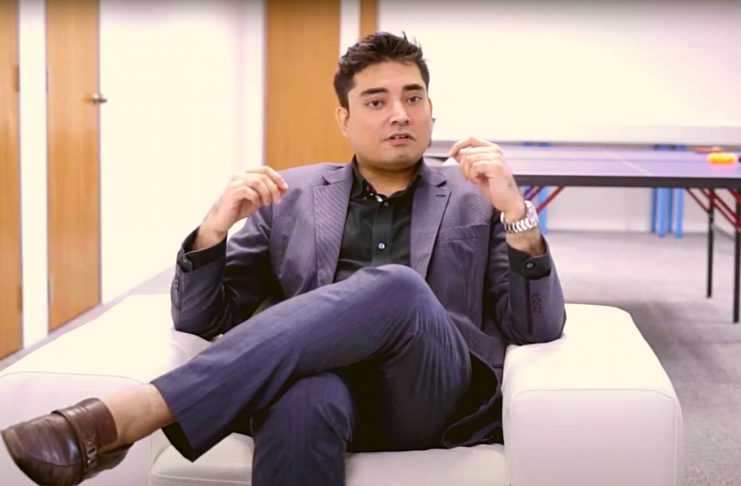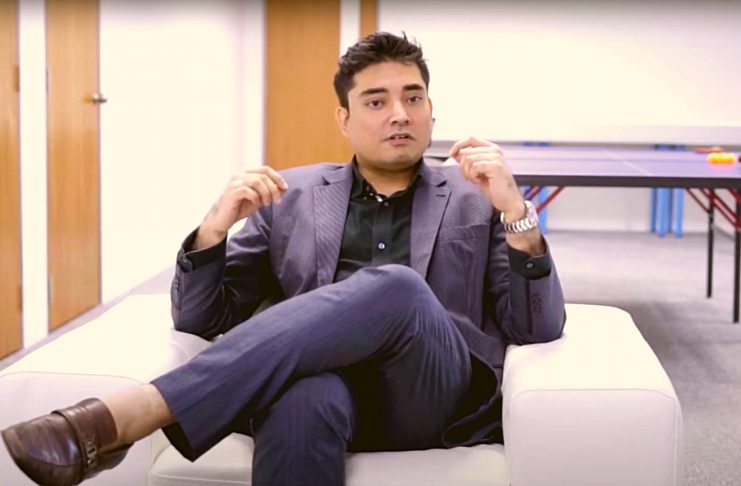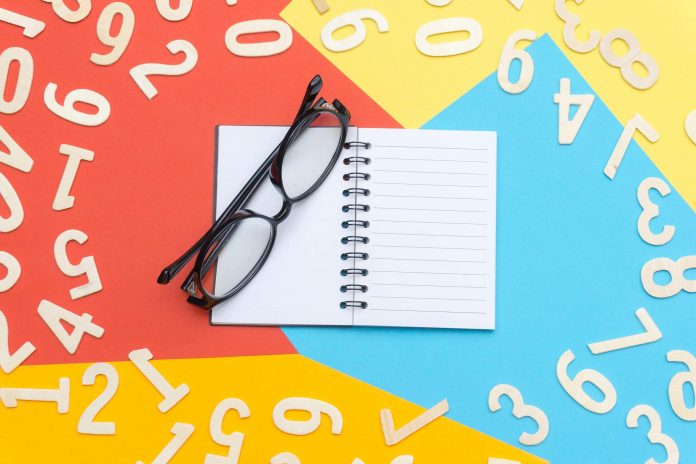From Numbers to Words: Sancy Suraj’s Winning Memory Techniques at the World Memory Championships
Sancy Suraj is a name that is well known in the world of memory sports. As a competitor in the 2011 World Memory Championships, Suraj amazed audiences with his ability to memorize vast amounts of information in a short amount of time. His impressive feats include memorizing 176 abstract images in 15 minutes and 480 numbers in 60 minutes. But what sets Suraj apart from other competitors is not just his impressive memory skills, but also his innovative and effective memory techniques. In this article, we’ll dive deeper into Suraj’s winning memory techniques, his training regimen, and his advice for aspiring memory athletes.
Can you describe the memory techniques you used to memorize 480 numbers in 60 minutes at the World Memory Championships?

Certainly, I’d be happy to describe the memory techniques I used to memorize 480 numbers in 60 minutes at the World Memory Championships. The technique that I used is called the “Memory Palace” technique, also known as the “Method of Loci”. This technique involves visualizing a familiar location in my mind, such as my home or a familiar route that I take, and mentally placing each item that I want to remember in a specific location within that location. This creates a mental map that I can use to recall each item later on.
To memorize numbers specifically, I used a technique called the “Major System”. This involves assigning a consonant sound to each digit from 0 to 9, and then creating words or phrases from those consonants to represent groups of numbers. For example, the number 480 could be represented by the phrase “Rope Van Roof”. I would then mentally place this phrase within my Memory Palace, using visual associations to help me remember the phrase.
During the competition, I was able to recall each number by mentally retracing my steps through my Memory Palace and recalling the associated word or phrase. I used visualization techniques, such as imagining the numbers as objects or visualizing myself interacting with them, to make the associations more memorable and vivid in my mind.
Overall, the Memory Palace technique and Major System were essential to my success in memorizing 480 numbers in 60 minutes at the World Memory Championships. By creating a mental map and using visual associations, I was able to quickly and accurately recall each number during the competition. With practice and dedication, these techniques can be used by anyone to improve their memory skills and achieve impressive feats of memorization.
How do you approach memorizing abstract images in a competition setting?
Certainly, I would be happy to describe how I approach memorizing abstract images in a competition setting. To begin, it is important to understand that abstract images can be difficult to remember because they do not have any inherent meaning or context. However, by using a technique called the “Story Method,” I was able to create associations and connections between the images in order to remember them more easily.
The Story Method involves creating a story that incorporates each of the abstract images. For example, if one of the images was a picture of a tree and another was a picture of a car, I might create a story in which a car crashed into a tree. I would then mentally visualize this story and the associated images, using sensory details to make the scene more vivid and memorable.
In a competition setting, it is important to work quickly and efficiently, so I would also use a technique called “chunking” to group the images together into manageable sections. For example, I might group 20 images together into a single “scene,” and then use the Story Method to create a story that connects all of the images within that scene.
During the competition, I would also use visualization techniques to help me remember the images more clearly. For example, I might imagine myself interacting with the images, or visualize them in a specific location within my Memory Palace.
Overall, the key to successfully memorizing abstract images in a competition setting is to use techniques like the Story Method and chunking to create associations and connections between the images, while also using visualization techniques to make the images more memorable and vivid in your mind. With practice and dedication, anyone can improve their memory skills and achieve impressive results in memory competitions.
Can you walk us through your training regimen leading up to the World Memory Championships?
Certainly, I would be happy to walk you through my training regimen leading up to the World Memory Championships. Training for memory competitions requires a combination of mental and physical preparation, as well as consistent practice over a period of several months.
First and foremost, I made sure to maintain a healthy lifestyle by getting enough sleep, eating a balanced diet, and staying physically active. This helped to keep my body and mind in optimal condition for training and competition.
In terms of mental preparation, I focused on developing my memory techniques and improving my ability to concentrate for extended periods of time. This involved daily practice sessions, in which I would spend several hours working on memorization exercises and techniques, as well as practicing my recall speed and accuracy.
To build my endurance and mental stamina, I gradually increased the amount of time I spent practicing each day, starting with short sessions and gradually working up to several hours at a time. I also made sure to take regular breaks to give my brain a chance to rest and recharge.
In addition to daily practice, I also participated in memory competitions and other events to gain experience and build my confidence. These competitions provided an opportunity to test my skills in a high-pressure setting and to learn from other top memory athletes.
Overall, my training regimen leading up to the World Memory Championships was a combination of consistent practice, healthy habits, and mental and physical preparation. By focusing on these key areas, I was able to develop the skills and stamina needed to perform at my best and achieve impressive results in the competition.
“Memory training is not just about memorizing information, it’s a holistic approach that requires mental and physical preparation, consistent practice, and healthy habits. It’s a journey that takes endurance, focus, and dedication, leading to impressive results in the World Memory Championships and beyond.”
What advice would you give to someone who wants to improve their memory skills?
Certainly, I would be happy to share some advice for anyone looking to improve their memory skills. The first and most important step is to start practicing regularly. Memory is like a muscle – the more you use it, the stronger it gets. Set aside a few minutes each day to work on memorization exercises, such as memorizing a list of words or numbers. Gradually increase the difficulty and duration of your practice sessions over time.
Another key to improving memory skills is to develop effective memory techniques. There are many different techniques and strategies that can be used to improve memory, such as the Story Method, the Memory Palace technique, and mnemonics. Experiment with different techniques to find the ones that work best for you, and practice them regularly to build your memory skills.
In addition to regular practice and effective techniques, it is also important to maintain a healthy lifestyle. This includes getting enough sleep, eating a balanced diet, and staying physically active. Exercise has been shown to be particularly beneficial for memory, as it helps to increase blood flow to the brain and promote the growth of new brain cells.
Finally, it can be helpful to participate in memory competitions or other events to gain experience and build your confidence. These competitions provide an opportunity to test your skills in a high-pressure setting and to learn from other top memory athletes.
Overall, improving your memory skills takes time, effort, and dedication, but with consistent practice, effective techniques, and a healthy lifestyle, anyone can achieve impressive results.
How do you stay focused and maintain your concentration during a competition?
Maintaining focus and concentration during a competition is absolutely critical to achieving success in memory sports. For me, there are several key strategies that I use to stay focused and avoid distractions.
First, I always try to stay relaxed and calm, even when the pressure is high. I find that taking a few deep breaths and visualizing success can help to calm my nerves and improve my focus. It’s important to remember that a clear and focused mind is essential for performing at your best.
Second, I try to eliminate any potential distractions or disruptions. This means finding a quiet and comfortable place to compete, where I can focus without being disturbed by noise or other distractions. I also make sure to turn off my phone and other electronic devices to avoid any interruptions.
Another key to maintaining focus during a competition is to break the competition down into smaller, more manageable parts. This means setting goals and focusing on specific tasks, rather than becoming overwhelmed by the entire competition. By focusing on one task at a time, I am able to maintain my concentration and avoid getting distracted by other aspects of the competition.
Finally, I try to stay positive and maintain a winning mindset. This means focusing on my strengths and abilities, rather than becoming discouraged by any mistakes or setbacks. By staying positive and confident, I am able to maintain my focus and perform at my best, even in the most challenging of competitions.
“Focus is the light that illuminates the path to success in competition. To maintain it, you must eliminate distractions, visualize success, break down the competition into manageable parts, and stay positive and confident in your abilities.”
When asked about his memory techniques for memorizing 480 numbers in 60 minutes, Suraj explained his use of the “Memory Palace” method. He visualizes a familiar location, such as his own home, and assigns each number to a specific object or location within the house. This technique allows him to create a vivid mental image of the numbers, which he can easily recall later.
Suraj also shared his approach to memorizing abstract images in a competition setting. He emphasized the importance of creating a story or narrative around the images, which helps to make them more memorable. By assigning meaning and context to each image, Suraj is able to create a more lasting impression in his mind.
As for his training regimen leading up to the World Memory Championships, Suraj spoke about the importance of consistent and focused practice. He spends several hours each day practicing his memory techniques, and he uses a variety of drills and exercises to challenge himself and track his progress.
Suraj’s advice for aspiring memory athletes is to start small and build gradually. He suggests focusing on memorizing simple objects or numbers at first, and gradually working up to more complex information. He also emphasizes the importance of practice and repetition, and encourages memory athletes to experiment with different techniques and find what works best for them.
What are your future goals in the field of memory sports?

My future goals in the field of memory sports are quite ambitious. First and foremost, I hope to continue competing at the highest level and to achieve even greater success in future competitions. This means continuing to refine my techniques, improve my memory skills, and push myself to new heights in terms of what I am able to memorize and recall.
In addition to my personal goals as a competitor, I am also committed to promoting memory sports and helping to grow the field. This means sharing my knowledge and experience with others, both through coaching and through public speaking engagements. I hope to inspire more people to get involved in memory sports and to demonstrate the incredible power of the human mind.
Beyond these immediate goals, I also hope to use my skills and expertise in memory sports to contribute to scientific research and innovation. Memory plays a critical role in so many aspects of our lives, from learning and education to mental health and wellbeing. By studying the techniques and strategies used by memory athletes like myself, researchers may be able to uncover new insights into how memory works and how it can be enhanced or improved.
Ultimately, my goal is to continue pushing the boundaries of what is possible in the field of memory sports, while also sharing my passion and knowledge with others and contributing to broader scientific research and understanding. I believe that memory sports has the potential to transform our understanding of the human mind and to unlock new levels of performance and achievement, and I am excited to be a part of this dynamic and rapidly-evolving field.
“Memorizing is not just a feat, it’s a skill that can be refined and shared. My goal is to continue pushing the boundaries of what we believe is possible, while inspiring and enabling others to unlock their full memory potential.”
Sancy Suraj is a true master of memory sports, and his innovative and effective techniques have helped him achieve great success in competition. Whether you’re a seasoned memory athlete or just starting out, there is much to learn from Suraj’s approach to memorization and his dedication to consistent practice and improvement. By following his advice and techniques, we can all unlock the incredible potential of our own memories and achieve greater success in all areas of life.














